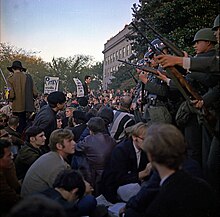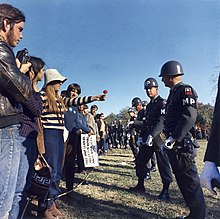
The Pulitzer Prize for Breaking News Photography is one of the American Pulitzer Prizes annually awarded for journalism. From 2000 it has used the "breaking news" name but it is considered a continuation of the Pulitzer Prize for Spot News Photography, which was awarded from 1968 to 1999. Prior to 1968, a single Prize was awarded for photojournalism, the Pulitzer Prize for Photography, which was replaced in that year by Pulitzer Prize for Spot News Photography and Pulitzer Prize for Feature Photography.
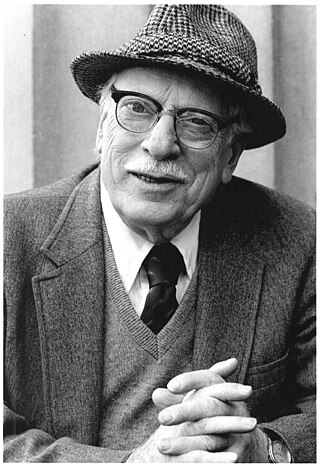
Joseph John Rosenthal was an American photographer who received the Pulitzer Prize for his iconic World War II photograph Raising the Flag on Iwo Jima, taken during the 1945 Battle of Iwo Jima. His picture became one of the best-known photographs of the war, and was replicated as the United States Marine Corps War Memorial in Arlington, Virginia.

The Pulitzer Prize for Public Service is one of the fourteen American Pulitzer Prizes annually awarded for journalism. It recognizes a distinguished example of meritorious public service by a newspaper or news site through the use of its journalistic resources, which may include editorials, cartoons, photographs, graphics, video and other online material, and may be presented in print or online or both.

The Pulitzer Prize for Feature Photography is one of the American Pulitzer Prizes annually awarded for journalism. It recognizes a distinguished example of feature photography in black and white or color, which may consist of a photograph or photographs, a sequence or an album.
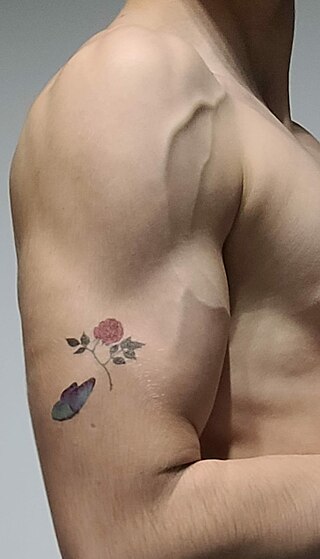
Flower power was a slogan used during the late 1960s and early 1970s as a symbol of passive resistance and nonviolence. It is rooted in the opposition movement to the Vietnam War. The expression was coined by the American Beat poet Allen Ginsberg in 1965 as a means to transform war protests into peaceful affirmative spectacles. Hippies embraced the symbolism by dressing in clothing with embroidered flowers and vibrant colors, wearing flowers in their hair, and distributing flowers to the public, becoming known as flower children. The term later became generalized as a modern reference to the hippie movement and so-called counterculture of drugs, psychedelic music, psychedelic art and social permissiveness.

Flower child originated as a synonym for hippie, especially among the idealistic young people who gathered in San Francisco and the surrounding area during the Summer of Love in 1967. It was the custom of "flower children" to wear and distribute flowers or floral-themed decorations to symbolize ideals of universal belonging, peace, and love. The mass media picked up on the term and used it to refer in a broad sense to any hippie. Flower children were also associated with the flower power political movement, which originated in ideas written by Allen Ginsberg in 1965.

Opposition to United States involvement in the Vietnam War (before) or anti-Vietnam War movement (present) began with demonstrations in 1965 against the escalating role of the United States in the Vietnam War and grew into a broad social movement over the ensuing several years. This movement informed and helped shape the vigorous and polarizing debate, primarily in the United States, during the second half of the 1960s and early 1970s on how to end the war.

David Hume Kennerly is an American photographer. He won the 1972 Pulitzer Prize for Feature Photography for his portfolio of photographs of the Vietnam War, Cambodia, East Pakistani refugees near Calcutta, and the Ali-Frazier fight in Madison Square Garden. He has photographed every American president since Lyndon B Johnson. He is the first presidential scholar at the University of Arizona.

Hibiscus was an American actor and performance artist. Starting his career in New York City, he moved to San Francisco, where in the early 1970s he founded the psychedelic gay liberation theater collective known as the Cockettes.
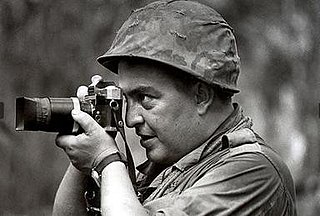
Horst Faas was a German photo-journalist and two-time Pulitzer Prize winner. He is best known for his images of the Vietnam War.
The Pulitzer Prizes for 1975, the 59th annual prizes, were ratified by the Pulitzer Prize advisory board on April 11, 1975, and by the trustees of Columbia University on May 5. For the first time, the role of accepting or rejecting recommendations of the advisory board was delegated by the trustees to the university's president, William J. McGill; the change was prompted by the desire of the trustees to distance themselves from the appearance of approval of controversial awards based on work involving what some considered to be illegal leaks, such as the 1972 Pulitzer Prize awarded for the publication of the Pentagon Papers.
The following are the Pulitzer Prizes for 1977.

Stanley Joseph Forman is an American photojournalist, who won the Pulitzer Prize for Spot News Photography two years in a row while working at the Boston Herald American.
The Spring Mobilization Committee to End the War in Vietnam, which became the National Mobilization Committee to End the War in Vietnam, was a coalition of American antiwar activists formed in November 1966 to organize large demonstrations in opposition to the Vietnam War. The organization was informally known as "the Mobe".
Bernie Boston was an American photographer most noted for his iconic Flower Power image.

The Ultimate Confrontation: The Flower and the Bayonet is a photograph of Jan Rose Kasmir, at that time an American high-school student. This iconic photograph was taken by French photographer Marc Riboud. Riboud photographed Kasmir on 21 October 1967 while taking part with over 100,000 anti-war activists in the National Mobilization Committee to End the War in Vietnam's March on the Pentagon to protest U.S. involvement in Vietnam. Seventeen-year-old Kasmir was shown clasping a chrysanthemum and gazing at bayonet-wielding soldiers. The photo was featured in the December 30, 1969 special edition of Look magazine under the title The Ultimate Confrontation: The Flower and the Bayonet. The photo was republished world-wide and became a symbol of the flower power movement. Smithsonian Magazine later called it "a gauzy juxtaposition of armed force and flower child innocence".
James Kenneth Ward Atherton, was a press photographer active in Washington D.C. for over forty years.

